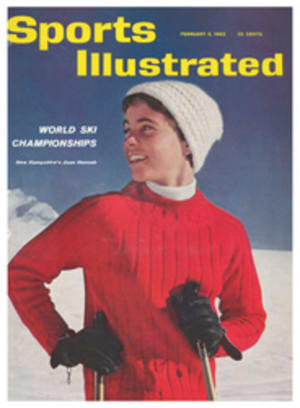
Make 'em push the panic button
In the final moments of a game in Los Angeles last month USC Coach Forrest Twogood saw his best guard suddenly lose the ball three times and almost throw away a Sure victory against Purdue. Furious, Twogood turned and tried to drop-kick his chair into the box seats. It was an understandable reaction, but Twogood was merely exemplifying the feelings of all victims of an increasingly popular tactic that has become the most exciting and exasperating maneuver in basketball—the zone press.
A wide-open, gambling defense with many variations, the zone press is a delight to both spectators and the coaches who get away with it. Spectators enjoy it because, unlike most of basketball's complex strategy, it is simple to recognize and always produces dramatic results. Maybe not the hoped-for results, but still dramatic. Coaches like it because it can compensate for lack of size, it can destroy the tempo of an opponent's offense and it offers a last desperate hope for as many as 20 straight points that can save a seemingly lost game. "It can be a tremendous psychological weapon," says Pete Newell, whose California teams used it well. "A team that is ill-prepared to face it can be reduced to chaos and panic," says Twogood. "It frustrates the opposition beyond explanation," says Byron Gilbreath, the assistant coach at Georgia Tech, which often uses it.
The basic principle of the zone press is simple: to put two men on the opposing player "who has the ball while also trapping him against a sideline. Thus surrounded and harassed, he can rarely get off a safe pass even though one of his teammates must be open somewhere. By leaving a man free, the defense takes a calculated risk, but it is a risk that often pays off.
One of the best zone presses in the country is Ohio State's, which starts from the basic position shown at right. State has just scored. Its men are shown by black squares. A and B are its two big forwards, John Havlicek and Doug McDonald. Instead of retreating up the court, they converge on offensive player 1 as soon as he gets the pass in bounds from 2. Since 1 and 2 are guards, they are usually smaller men. Thus 1 finds himself trying to contend with two bigger men cartwheeling their arms and blocking his vision. Meanwhile the Buckeyes' faster men, guards C and D, are in a position to try to intercept any "weak or misdirected pass. If 1 should pass to 2, coming on court at his left, B and D then converge and trap 2 as the press continues. Note the Buckeye center, E, acting as a safety man in case the press is broken. This is the press Ohio State used so sensationally against Louisville in the NCAA tournament last year, stealing the ball twice in the last two minutes to score five points and win by one.
Arizona State's deep press
The zone press used by Arizona State (above) is altogether different from Ohio State's and somewhat riskier, for the safety man (D) is way up at mid-court. This press usually starts following a successful free throw. If the player who made the shot is a forward or center he steps in front of the foul line, as E has done, where his job is to prevent any pass up the middle. The two guards, C and D, are in a straight line behind him. The pass in from 2 is permitted to go to either 1 or 3, for that is where Arizona State wants the ball. If the pass is to 1, E and B, two big men, converge on 1, while C slides over to cover the zone where the next pass is most likely to be attempted. Likewise, D and A take responsibility for the shaded areas shown. If 1 passes cross-court to 3, the trap simply shifts to the other side.
One object of the zone press is to force a weak lob-pass, which gives the defense time to adjust even when it can't intercept. "But the harassment is more effective than the interceptions you might get," says Ned Wulk, Arizona State's coach. "The press is almost—but not entirely—a psychological device. It plays on panic." One intriguing aspect of the zone press is that it is often most effective against a very good guard who dribbles well. Such a guard tries to dribble out of trouble instead of looking for help. "You can't whip this press with fancy dribbling," says Wulk. His teams are now so well drilled in the press that they can shift into it in mid-play at the shout of the apt code word "fire." But Wulk didn't teach the press at all until an awful night in the 1957 NIT championship when he watched Bradley use it to out-score his Xavier team 30-4 in one brief stretch. Shaken, Xavier missed 19 good shots during those minutes, and Wulk was a convert to the zone press.
Cincinnati's half-court press
Almost all teams with the ability and discipline to use a full-court zone press also have a half-court press which is not applied until the offensive team has crossed the center line. Many coaches prefer this type of press, for it gives the defense an opportunity to assemble and attack the ball in an orderly fashion. It also greatly reduces the gamble, since there is less room for an opponent to work free for an easy layup. The half-court press shown below is a 1-2-2 used by National Champion Cincinnati. Again, two men go for the ball handler, 1. If he passes to 5, B and E converge on 5, while A moves across in case of a pass to 4. A pass to 2 would put D and C on the ball. As usual, an opposing man is always left unguarded, but the presumption is that the man with the ball will be so harassed that he will not be able to find and pass to that open man.
Another type of half-court zone press is a 3-1-1, with the back man being the center, who plays under the basket. West Virginia, always a good pressing team, used this with great success in the 1959 NCAA championship game with California, where it overcame a 13-point deficit and almost won. Ohio State used it recently against Washington for a completely different reason. Ahead but foreseeing a very close game if Washington was permitted to continue its slow and deliberate offense, Ohio State put on a press that left a Washington player very clear in one corner. Washington had no choice but to pass to him, the player had no choice but to shoot, and even though he scored Ohio State had succeeded in changing the tempo of the game to the much faster pace at which it excels and Washington does not. After the defensive move altered the pattern of the game, State's offense began functioning properly. The Buckeyes won by 10 points and, as it has been more and more frequently, the press was the key to victory.
DIAGRAM
1
2
3
4
5
A
B
C
D
E
DIAGRAM
1
2
3
4
5
A
B
C
D
E
DIAGRAM
1
2
3
4
5
A
B
C
D
E

